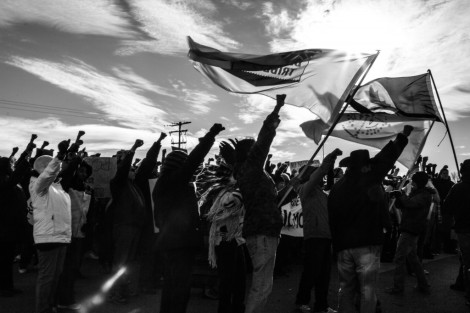Below is the introduction to a post I wrote for First Peoples Worldwide. For the full post, read it on First Peoples’ blog here.
A few years ago, I wrote a piece titled, The Art of Slacktivism about how young people were Tweeting and Facebooking away from their dorm rooms and sofas to support causes they believed in. Millions donated $10 to relief efforts in Haiti from their cell phones and then went on with the rest of their lives feeling as if they changed the world. Slacktivism seemed a perfect philanthropic transaction for the ADHD-riddled 21st century – fast, convenient and cheap.
Then all of a sudden people filled the streets Tunisia and a dictator fell. Wael Ghonim, a Google employee in Egypt, started a Facebook page that rallied Egyptians to oppose the now fallen Hosni Mubarak regime. The Arab Spring spread and dictators tumbled in Libya and Yemen, and uprisings and protests continue throughout the region.
The United States wasn’t immune. On September 17, 2011, people emerged from behind their laptops and mobile phones and marched on Wall Street to protest corporate greed in the wake of the economic meltdown. Occupy Wall Street soon became Occupy Chicago, Boston, Portland and spread across the world.
These people were not “slacktivists” but activists, revolutionaries and heros. Social media was finally living up to expectations – inspiring people online to take offline action.
But two of the biggest movements may be yet to come.
The first is Idle No More, a movement that caught many by surprise. What began with four indigenous women protesting Bill C 45 for violating Canada’s Indian Act became a movement of Indigenous People circle dancing in the streets across Canada, blockading rail lines, and hunger striking to speak with the Prime Minister and Governor General. By using the Twitter hashtag#IdleNoMore, the movement spread across North America and the world. It came to represent Indigenous Peoples fight for self-determination, cultural respect and a healthy environment for all. It is as powerful as it was spontaneous.
350.org‘s climate movement is different. It was a planned, concerted effort by environmentalist Bill McKibben and his students. They have worked hard over the last few years to build up a following of people concerned about climate change and asking them to act. 350 has mobilized its followers to petition the US Congress to stop the Keystone XL pipeline, “Connect the Dots” by sharing photos of the impact of climate change on social media, “Do The Math” and pressure universities to divest from the fossil fuel industry, and most recently to take to the streets in Washington, DC and pressure President Obama to act in climate change. 350.org is no less grassroots, but it has a center from which it coordinates its efforts.
With Idle No More and 350.org dominating the headlines (at least of Huffington Post), I had the chance to interview Rebecca Adamson, an indigenous leader and founder of First Peoples Worldwide, and Bill McKibben, environmentalists and co-founder of 350.org, to find out what makes a movement and what the future holds for Idle No More and the Climate Change movements…
Click here to read the interview with Rebecca Adamson and Bill McKibben.
